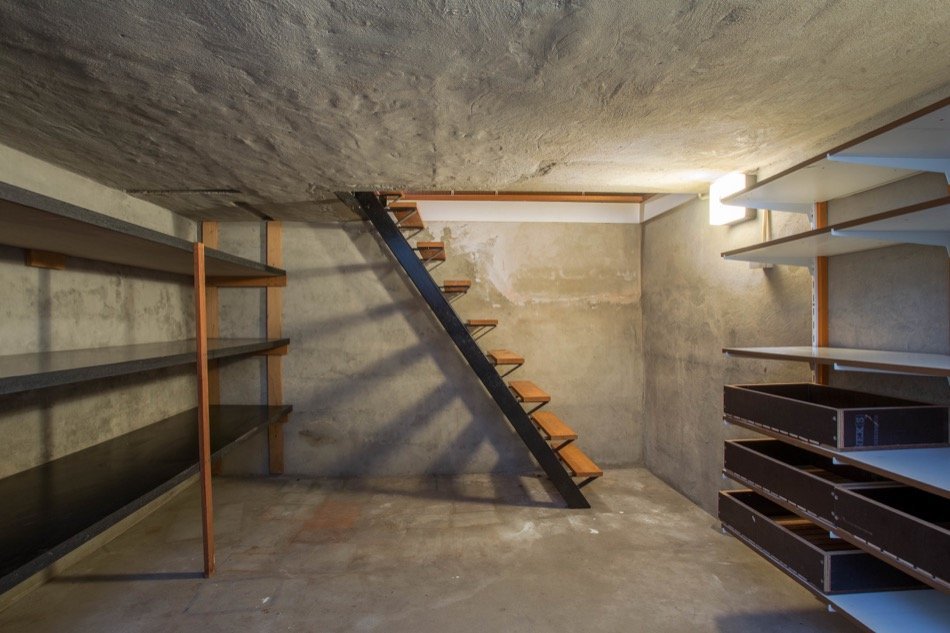Common Basement Types Found in Homes Across the US
Posted by Gary Ashton on Monday, October 28th, 2019 at 11:44am.
 A finished basement not only adds space to a house but also provides an excellent return on investment. Adding or finishing a basement can provide a return of up to 70 percent, increasing the home's value and function. Not all homes can have a basement added easily, however, so it pays to learn more about the different types before trying to start this project. With this knowledge in hand, homeowners can move forward with their home improvement plans with confidence that all will work out.
A finished basement not only adds space to a house but also provides an excellent return on investment. Adding or finishing a basement can provide a return of up to 70 percent, increasing the home's value and function. Not all homes can have a basement added easily, however, so it pays to learn more about the different types before trying to start this project. With this knowledge in hand, homeowners can move forward with their home improvement plans with confidence that all will work out.
Crawlspace
A crawlspace provides limited access to the plumbing and other components beneath the house. Usually accessible through a small door or hatch, this space is often just a couple of feet in height. The crawlspace extends out all the way beneath the residence, though some areas are not easily accessible due to the plumbing lines and other obstructions.
There is no standing room, hence the name, making the conversion to a full basement quite the undertaking. Home improvement professionals have to pour concrete footings, extend the foundation, and lift the house to build out daylight or a full basement.
Cellar
A cellar, on the other hand, extends below a small portion of the house, creating cold storage for produce, wine, and preserved foods. Cellars have plenty of standing room to allow people to bring food and other items down there with ease.
For that reason, they are easily converted into a basement living space. Homeowners can either elect to have the cellar finished as a functional room or extend out space across the rest of the home. Foundation revisions may be necessary if homeowners choose to extend the cellar out.
Daylight
In a daylight basement, half of the space is underground while the rest is above ground. The above-ground space often features small windows that can open and close to let fresh air inside. Daylight basements stretch across the entirety of the home, effectively doubling the living space when finished. They do not have any external doors, however, unlike walk-out basements.
Many homes in the US have unfinished daylight basements that only have concrete floors and walls. To convert the unfinished basement into a quality living space, contractors must:
- Run electrical outlets and lighting
- Close up the walls with drywall
- Apply a layer of paint to all the walls
- Install the flooring of choice
Then, they must complete all the finished work to transform the unfinished daylight basement into a stunning living space.
Walk-Out
Walk-out basements typically have a door to the outside on the lower level, though there may be stairs leading up to the exit. These basements can either sit on ground level or partially underground like daylight basements. They typically have full-size windows that can open and close freely.
An unfinished walk-out basement can be easily made into a complete basement living space by a skilled contractor. Adding a walk-out basement, on the other hand, is much more complicated. Home improvement professionals have to lift the entire structure and alter the foundation to complete this project.
Subbasement
A basement floor beneath a walk-out or daylight basement is called a subbasement. This type of structure sits completely underground and does not have windows or exterior doors. The subbasement connects to the rest of the house by way of a staircase. Many people use the sub-basement for storage when they already have another basement space.
Since it is necessary to dig deep down into the ground to create a subbasement, this is a rather rare residential upgrade. The entire foundation would need to be redone to accommodate the extra space and fully support the structure above. Subbasements are typically left unfinished, as they are prone to flooding.
With an understanding of the different types of basements used in homes across the US, Franklin homeowners can decide how to best renovate their residence. Whether they want to add a full basement addition or simply refinish what they have, homeowners can use their newfound knowledge to make the best decision for their household.

Gary Ashton
The Ashton Real Estate Group of RE/MAX Advantage
The #1 RE/MAX team in the World!
